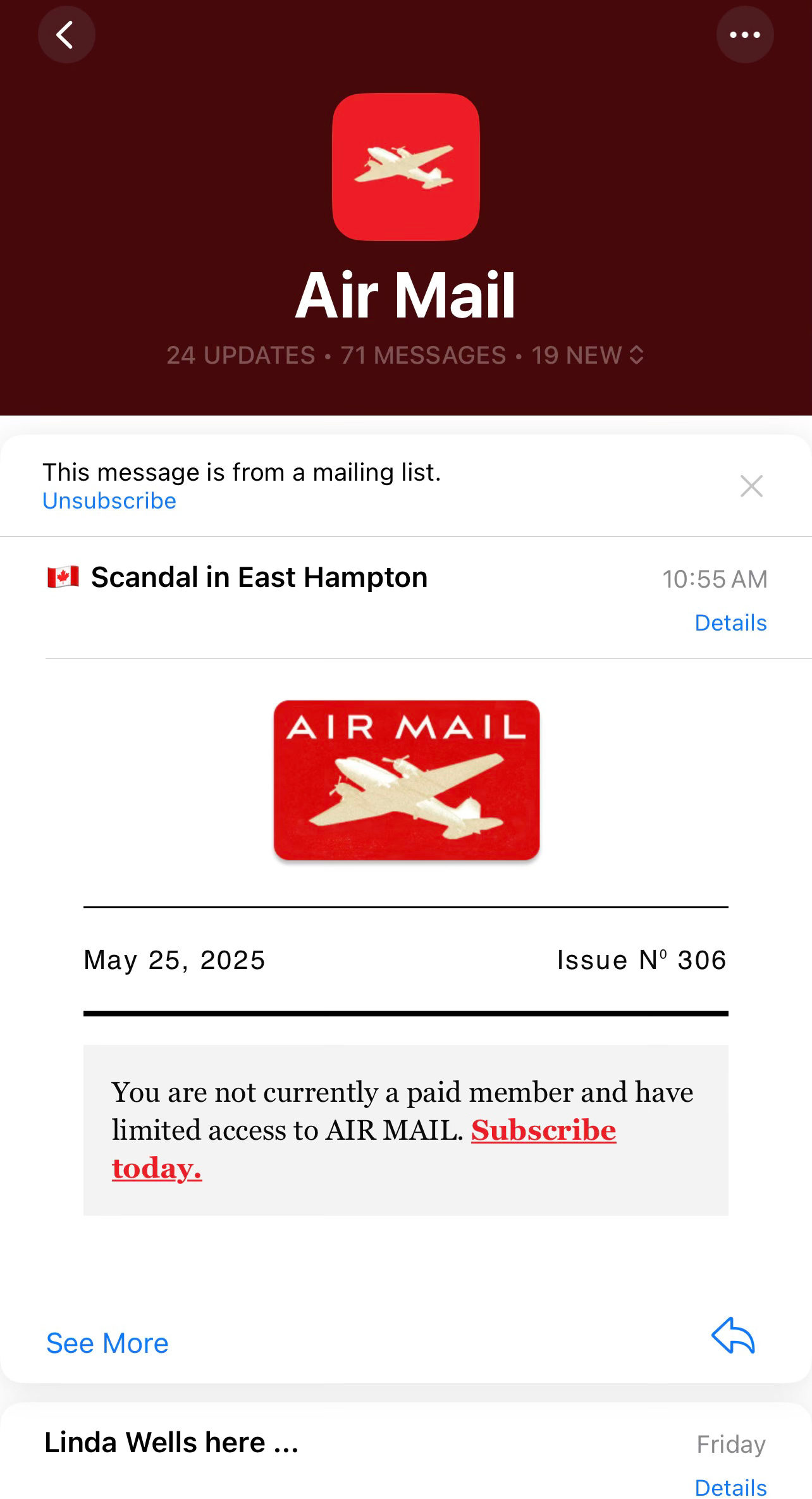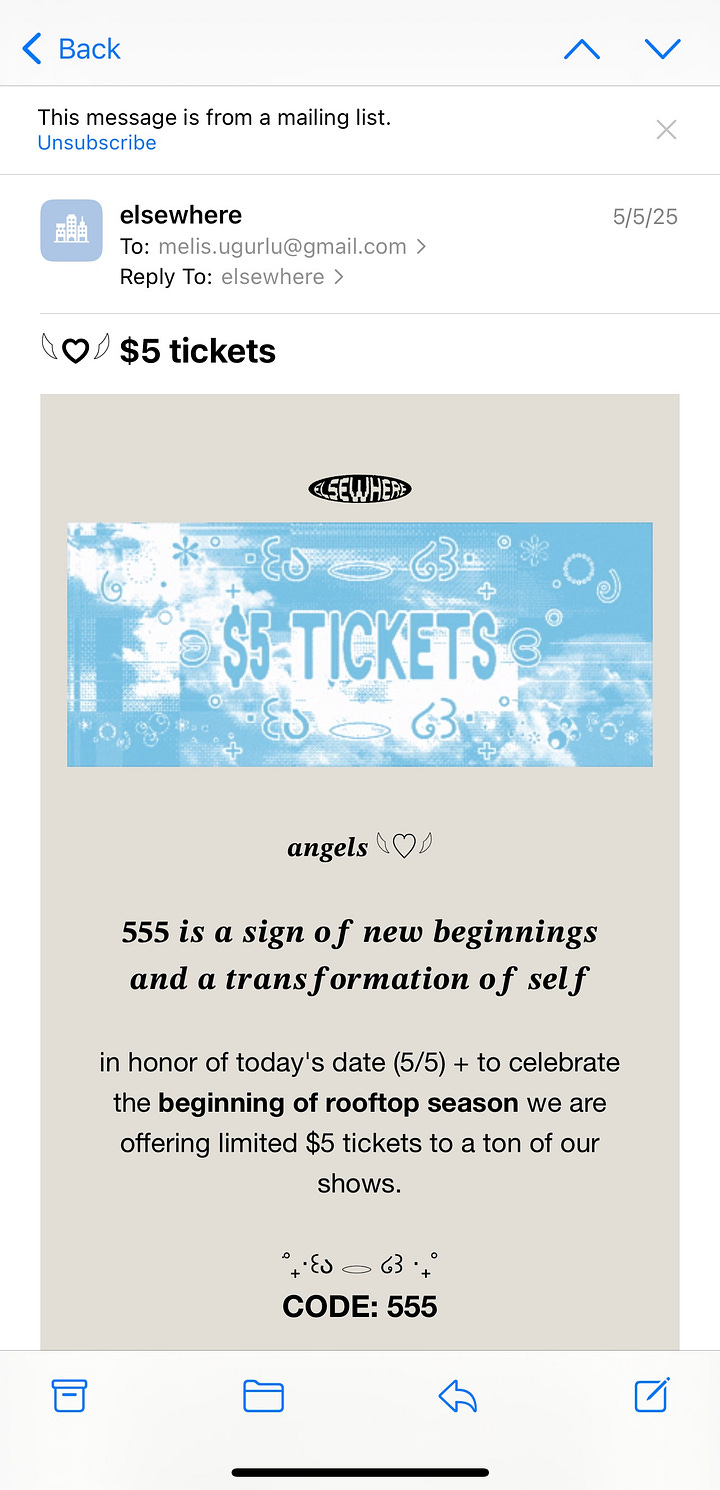A few weeks ago, I caught myself opening my email before Instagram. Not because I was being productive or chasing work, but because I was bored—I was searching for something to make me feel like I was watching the world happen. I wanted to something to scroll.
That morning, I clicked open my inbox like it was a timeline. A dozen unread newsletters about anything and everything—from a fashion editor’s review of the Vatican Pharmacy Perfume to the latest updates on Columbia University’s surrender to the Trump administration. Roundups, links, screenshots, forwarded missives from newsletters I don’t even remember subscribing to. And the tone is uncanny: everyone sounds like they know me. The subject lines read like tweets or headlines. Half the time, I can’t tell if I’m being sold something or consoled. I read, I skim, I click, and I archive. Then I check Twitter.
When did the inbox become a feed?
Email is cool and vibrant again, and it certainly did not use to be like this. The inbox used to feel like work—a slow, boring corner on your phone where anything barely ever happens. You’d even forget to check your email over the weekend.
Somewhere along the way, the inbox stopped being a filing cabinet and became a cultural surface. It’s where commerce, content, and relationships all sit together; some are not even meant to be opened, you can just read the subject line like it’s a headline. There’ll be a sample sale invite, a pitch from a stranger, a save the date, a newsletter about a cultural critique, and a brand email reminding me that “self-care starts with 15% off.”
The biggest change for me has perhaps been with the news. Now that so many independent journalists are launching their own newsletters—or media companies are shifting to newsletter-first platforms—I get a lot of my news from email. We used to say we’d hear about something on Twitter first, then Instagram. I’m still grateful for both, especially given the cloud of censorship we live under with mainstream headlines and media content. Maybe the inbox isn’t quite there yet, but I do check my email the way I’d scroll a news feed—to see what’s been happening and what the people whose opinions I trust are thinking about it.
It also speaks to the speed at which content circulates via email. I don’t mean delivery speed (which, obviously, is instant). I mean how quickly someone will actually write and send an email—knowing people will check it. A news story from the morning can show up in your inbox as a personal essay or hot take by late afternoon.
As a result, people are curating their inboxes now the way they used to curate their feeds. You don’t want too much noise, but you also don’t want to miss out. The inbox is no longer just where work gets done. It’s where identity circulates. Consumption habits, emotional bandwidth, schedules, receipts, brand affinity, attention—all of it shows up here first.
And lately, its aesthetic is starting to follow that of a feed’s, too. If you use Apple Mail, you’ve probably noticed the recent design update. Emails are now displayed like cards—big, clean, swipeable tiles. And they’re bracketed into tabs: Transactions, Updates, Promotions, Primary, and finally “All Mail.” It’s very feed-like to facilitate a curated scroll. You half-expect an algorithm to recommend what to open next.
The inbox has become ambient media. It’s also an economy of its own. It’s where you go to feel connected, but it has also become one of the most lucrative little spaces on the internet—every square inch monetized by brands, freelancers, side hustlers, writers, DTC beauty startups, ghostwriters for CEOs, and emotionally intelligent wellness coaches who want to teach you how to optimize your open rate. Your inbox isn’t private anymore. It’s real estate. Someone is always trying to rent space in your attention span.
We pay with our attention and brands pay for placement. There are entire growth agencies built around getting people to open emails. Open rate is a metric now, a performance. Newsletters, launch announcements, referral links, affiliate codes. Everyone wants in. Not onto your feed, but into your inbox. It feels more intimate. It converts better. It’s where the link is clicked.

Though there’s another emotional aspect that I find myself attached to: emails from my past life that I’m still subscribed to. I deliberately don’t unsubscribe, even if it’s the weekly music calendar from that one club in New York, where I no longer live. But I love staying connected in that way.


The inbox is a strange archive, a feed, a portrait of your interests, connections, subscriptions, and late-stage capitalism—generously replying all.
Have a lovely Sunday,
Melis



